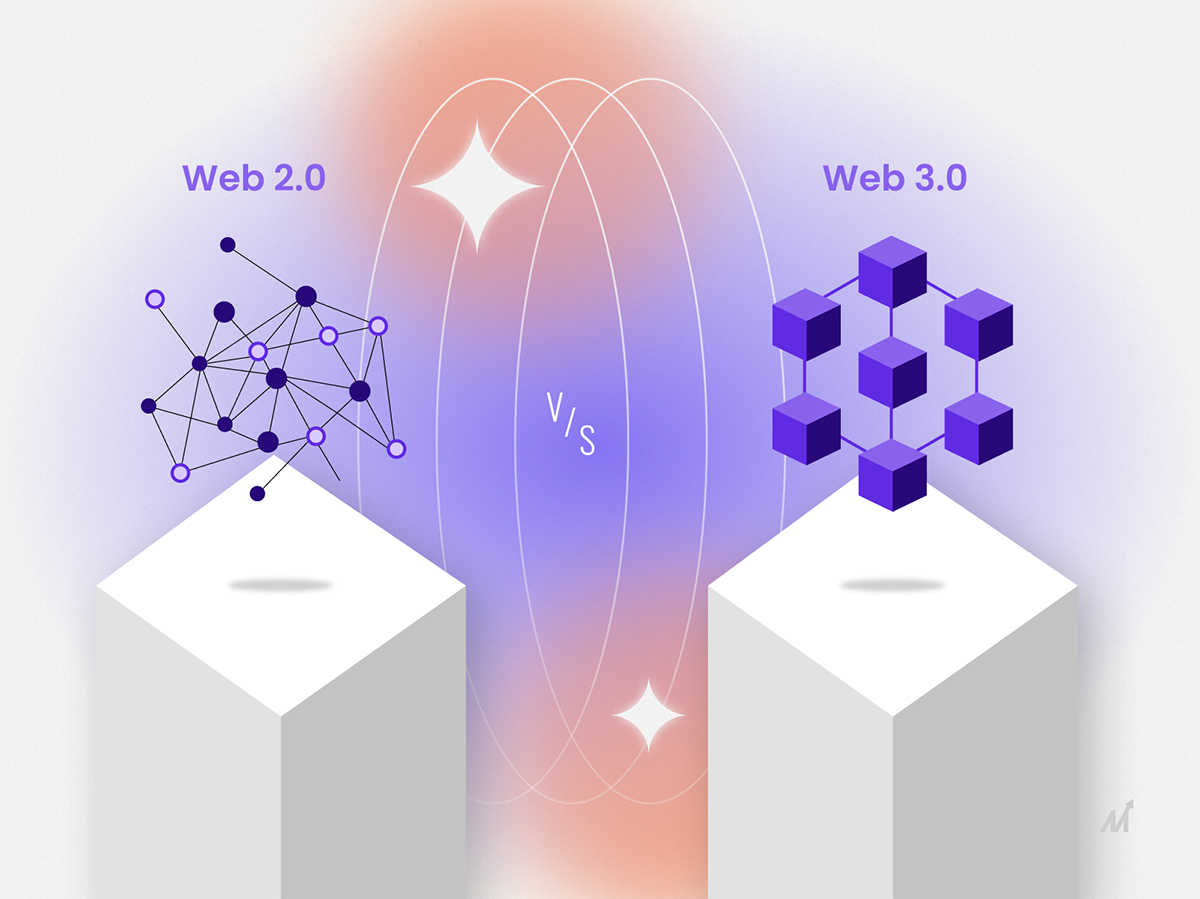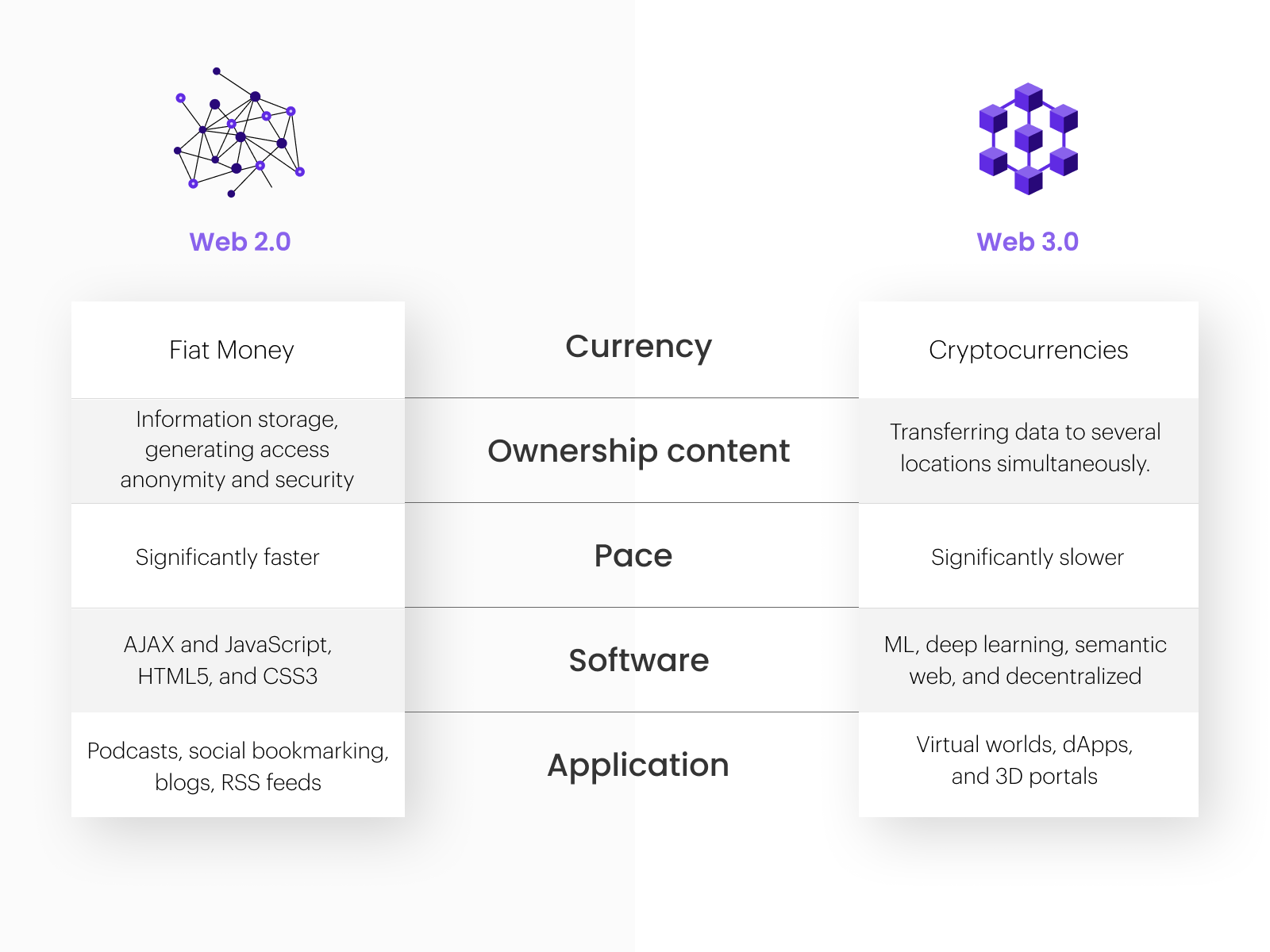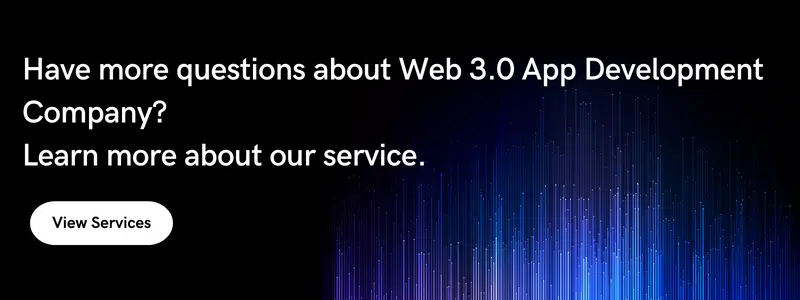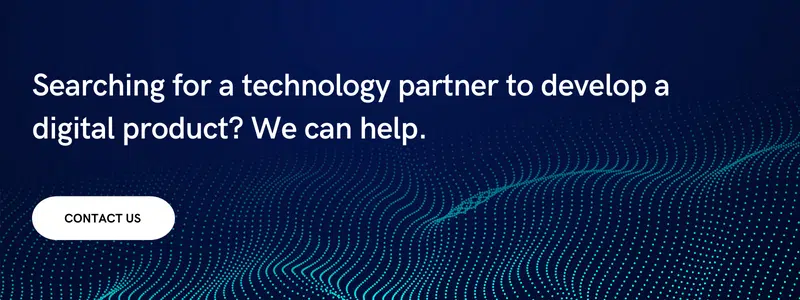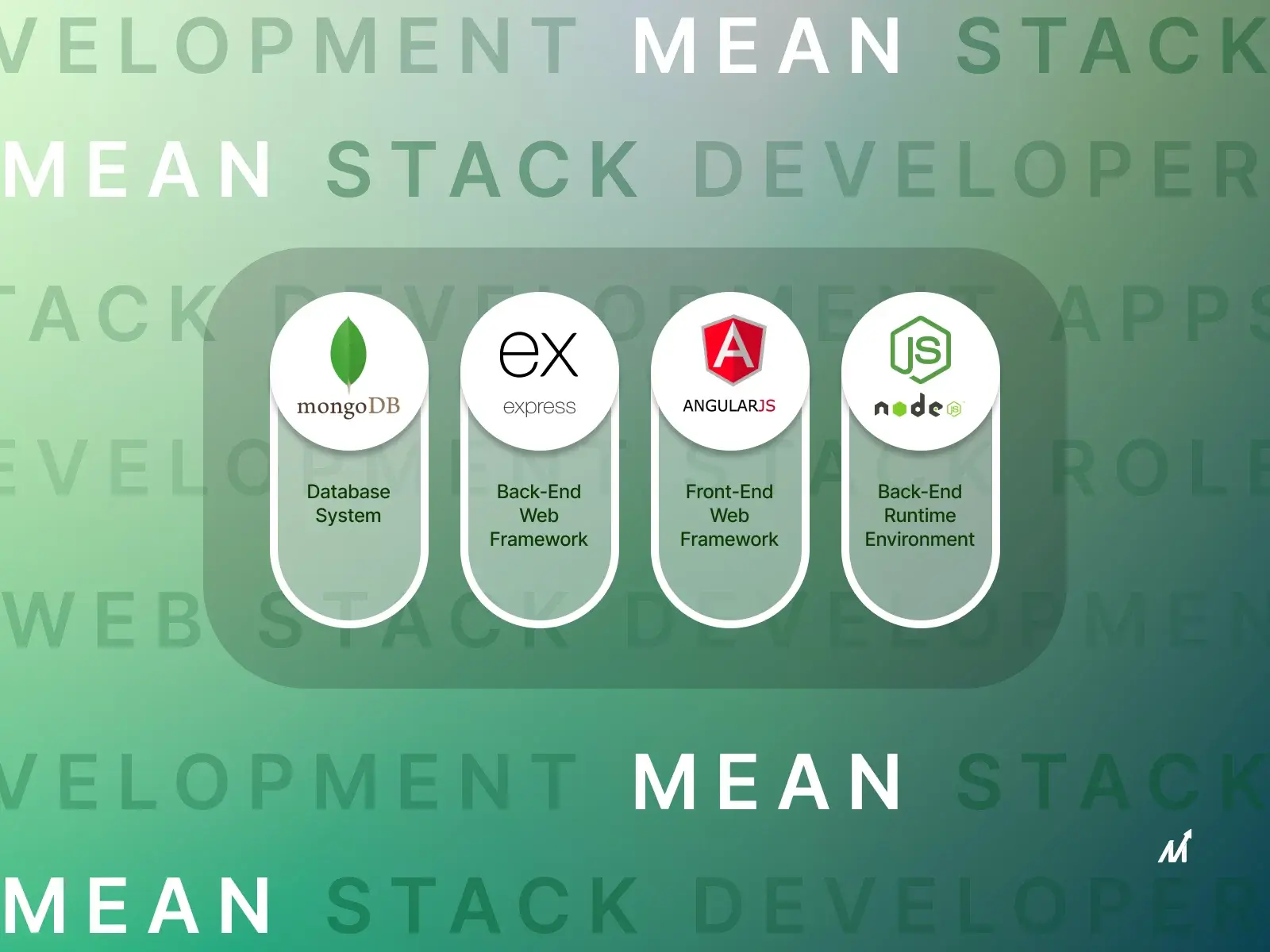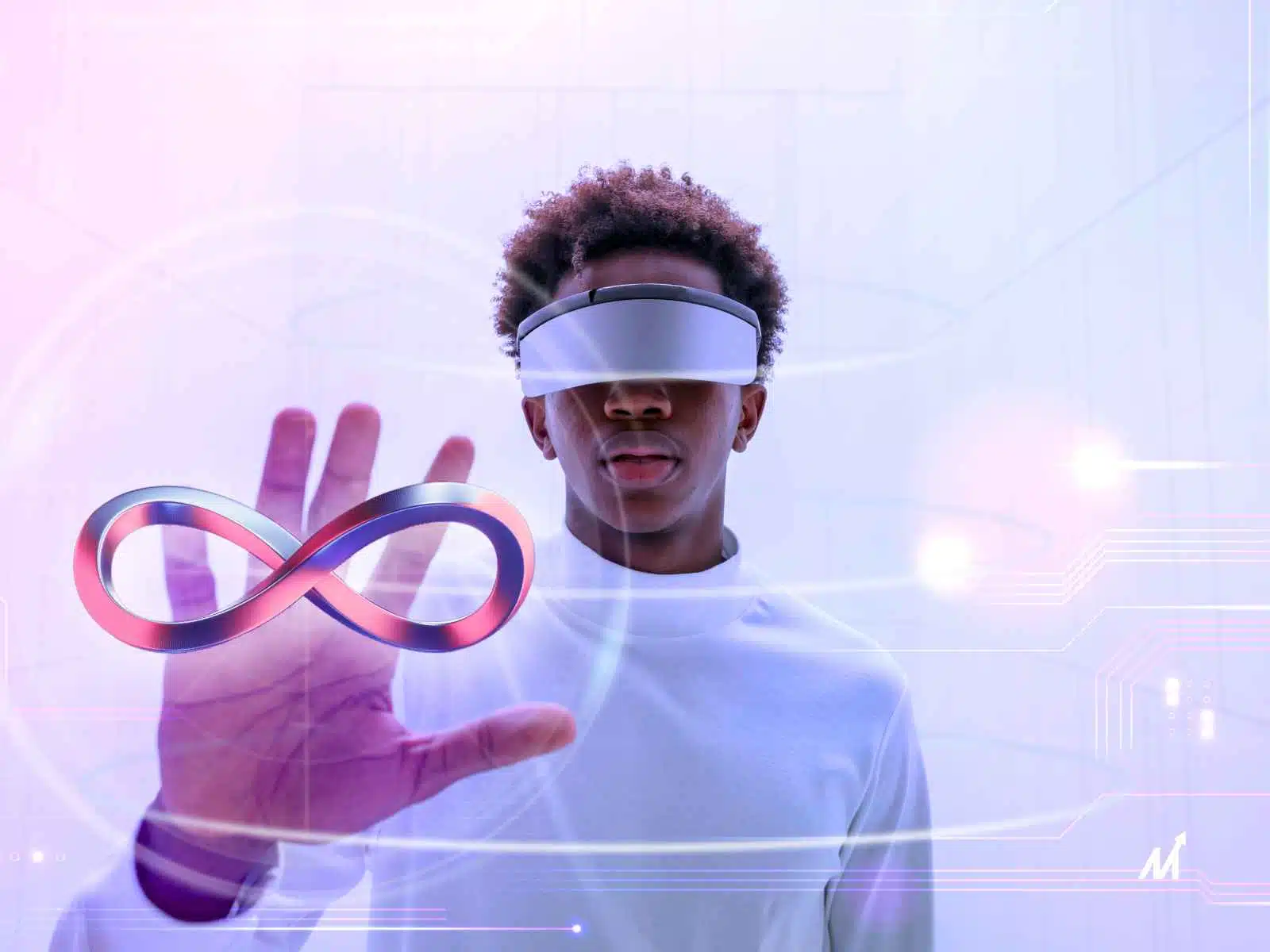Web2 vs Web3: Introduction
Web3 is gaining traction in the internet world. Its growing popularity is proportional to the widespread acceptance and usage of blockchain and security technologies. The fact that Web3 will become the standard sooner or later gives us an opportunity to examine past generations, their differences, and so forth.
Web2 caters to today’s internet generation, whereas Web3 is the semantic web. From the early days of Web 1, which comprised static text and images, to the present iteration – Web2, the Internet has advanced swiftly. We are approaching the Web3 age, in which value and data will be effortlessly transferred across decentralized platforms with dispersed ownership and governance.
As per the statistics, amongst the Web3 apps, 46% of the apps are in the finance sector, 8.9% belong to the social sector, and the rest belong to the games, business, and various sectors.
Let’s learn more about the evolution of the Internet, from the primary web to a semantic world, the distinctions between Web2 vs Web3, related ideas, how they differ, and which will rule supreme in the next decade.
Web2 vs Web3: Exploring The Differences Through Statistics
- Web 2.0 and Web 3.0 are related technologies with similar origins, but they handle difficulties differently. The primary contrast is that Web 2.0 is concerned with reading and publishing content, whereas Web 3.0 is concerned with generating content (Semantic Web). The latter is far superior, leveraging technology to encourage information exchange among online users while improving cybersecurity.
- More than 3 billion individuals daily profit from Web 2.0 for 80% of their waking hours. It shifts information consumption from static desktop web pages delivered from pricey servers to interactive experiences and user-generated content.
- Interactivity and users are central to Web 2.0. Most of the material is created by users on sites such as YouTube, Facebook, and Twitter. Web 2.0 is more social and collaborative, but it typically has a cost. The disadvantage is that users disclose personal and private data to the firms that run these platforms by generating material.
Further Read: Web3 Mobile Apps: Architecture Explored & Explained
Web2 vs Web3: 5 Key Differences
While Web2 attempts to connect individuals, Web3 integrates this data in terms of meaning while also improving trust. This occurs as a result of decentralization. More Web2 vs Web3 distinctions are given below:
1. Currency
Fiat money is used for Web2 currency payments. Transactions are conducted using government-issued money, such as the US dollar. Web3 uses cryptocurrencies like Bitcoin and Ethereum to fund transactions as an alternative.
2. Ownership Of The Content
With Web 2.0, the network takes over information storage, generating access challenges and worries about the anonymity and security of online data. Web 3.0 addresses this issue by transferring data to several locations simultaneously.
3. Pace
Web2 transfers are significantly faster than Web3 transfers. Web2 uses HTTP in unique web addresses to search for information stored in a fixed location, often on a single server. Web3, on the other hand, distributes ownership to a slew of other people (decentralization).
4. Software
Web2 technologies include AJAX and JavaScript, HTML5, and CSS3. Technologies include machine learning, deep learning, semantic web, and decentralization power Web3.
5. Application
Blogs, RSS feeds, podcasts, social bookmarking, and video sites are examples of Web2 applications. Web3 integrates virtual worlds, dApps, and 3D portals driven by Artificial Intelligence (AI) and machine Learning (ML).
Web2 vs Web3: Why Choosing The Better Options Matters For Your Business?
The influence of Web 3.0 on the company will be openness and user/customer orientation. As a result, the way firms use their customers’ data will alter. Because blockchain is at the heart of Online 3.0, all web apps must be blockchain-enabled to participate.
Businesses can benefit from Web 3.0 in the following ways:
- No need for a third party.
- Compliance with regulations has improved.
- More accountability.
- Increased security.
- Improved customer relations.
- Efficient Supply chain management.
Web2 vs Web3: Tabular Comparison
| Sl No. | Web2 | Web3 |
| 1. | Strongly read-write | Read-write-interact |
| 2. | Shared content | Consolidated content |
| 3. | Programmable Web | Linked data Web |
| 4. | Wikis and blogs | Waves and live streams |
| 5. | Web service endpoint | Data Space |
| 6. | XML/RSS | RDF/RDFS/OWL |
| 7. | Cost per click | User Engagement |
| 8. | Instant messaging, Ajax and JavaScript frameworks, Adobe Flex | Personal intelligent data assistants, ontologies, knowledge bases, semantic search functions |
| 9. | Tagging the user | User behavior |
| 10. | Wikipedia | The Semantic Web |
| 11. | Interactive advertising | Behavioral advertising |
| 12. | Active 1999-2012 | Active 2006-ongoing |
| 13. | Web 2.0’s ascent is primarily driven by three primary layers of innovation: mobile, social, and cloud. | Edge computing, decentralized data networks, and artificial intelligence will be the foundations of Web 3.0. |
| 14. | Web 2.0 gear, which had just been commoditized, was reused in data centers. | Web 3.0 will bring the data center to the edge, right into our hands. |
| 15. | Payment systems do not compensate for certain forms of employment. | Payments under Web 3.0 do not require any personal information and cannot be prevented. |
Potential and Pitfall of Web3 Architecture
Web3 elevates the paradigm of digital interaction by transcending the prevailing limitations intrinsic to Web2 platforms, which predominantly revolve around social networking, video streaming, and e-commerce. At its nucleus, Web 3.0 integrates advanced functionalities like Semantic Web technologies, artificial intelligence algorithms, and machine learning models. Such advancements stand poised to amplify the realm of applicability and invigorate user interfaces with unprecedented levels of customization.
A hallmark attribute of Web 3.0 is its emphasis on decentralized architectures and permissionless blockchain protocols. These elements collectively empower individuals with the capacity to exercise authoritative discretion over their proprietary data. In particular, the quintessential practice of unauthorized data harvesting could see substantial constraints. Such systemic shifts stand to dilute the unbridled network advantages that have hitherto propelled technology conglomerates into quasi-monopolistic entities, chiefly due to manipulative advertising algorithms and intrusive marketing schemas.
Conversely, the pivot to a decentralized framework is not devoid of complex jurisprudential and regulatory implications. The autonomous nature of decentralized systems renders traditional cyber governance mechanisms substantially ineffective. Issues of cybersecurity, as well as content that constitutes hate speech or disseminates false information, face exacerbation given the absence of a centralized entity equipped to enforce compliance standards or governance codes.
Moreover, the multi-jurisdictional characteristic of decentralized systems poses intricate legal conundrums. In such an environment, delineating the jurisdictional purview becomes an arduous task. To illustrate, questions arise over the applicable legislative and judicial frameworks for content and services that are transnationally hosted. The conundrum is further complicated when considering the seamless cross-border flow of digital assets and cryptographic tokens in a decentralized ecosystem.
In a nutshell,
Therefore, while Web 3.0 offers unparalleled advantages in terms of user control, interface personalization, and application diversity, it also precipitates new layers of complexity in terms of legal accountability and governance. As stakeholders across the technology, legal, and regulatory sectors converge to shape this evolving digital landscape, the direction and efficacy of the transition to Web 3.0 remain contingent upon a coordinated, multi-disciplinary approach aimed at balancing innovation with responsible governance.
Web2 vs Web3: Conclusion (Markovate’s Take)
Web2 vs Web3 is a variant of the age-old centralized versus decentralized argument. Because Web3 has yet to appear, its supposed superiority to Web2 is debatable. However, with its decentralized architecture, Web3 has the opportunity to address the data-related problems that have plagued Web2 and return control to consumers.
Web2 is a well-known internet version. It is dominated by firms that provide services in return for personal data. Web2 will not be phased out anytime soon due to these constraints. The most likely scenario is that Web2 and Web3 will coexist in battel of Web2 vs Web3, and we can access either network. This indicates that organizations will not completely pivot to Web3 but will instead begin developing d-app products for Web3.
Web3, on the other hand, refers to decentralized apps that operate on the blockchain. Such apps enable everyone to engage without having to monetize their data.
After reading this article about Web2 vs Web3, we believe you will have answers to all of your pertinent questions. You can contact us for further information; we would be delighted to assist you.
Further Read: Web3 vs Metaverse: Everything You Need To Know
Web2 vs Web3: Frequently Asked Questions
1. What are the benefits of Web3?
- While doing Web2 vs Web3, Web3’s key advantage or value for consumers is its decentralized nature. A democratic environment where spending is more visible due to publicly distributed ledgers is fair and trustworthy. As a result, corporate corruption will eventually decline. Web3 certainly can improve corporate and government processes. However, because of the magnitude of the change, it will most likely be met with criticism.
- While decentralization is one of the most significant advantages that Web3 might provide, others include:
- Pervasiveness
Multiple apps can access the data, each device is linked to the Internet, and services can be accessed from anywhere. - Semantic Web
In the evolution of the Internet, the Semantic Web represents the next step. It upgrades the entire venture of web-based platforms. Users may use semantic technologies to create online data repositories, define vocabulary, and establish data handling rules. RDF, SKOS, OWL, and SPARQL are significant technologies to enable linked data. - Connectivity
Data is associated with Web 3.0 because of semantic content, leading to an enhanced user experience that takes to a new level of connectivity that harnesses all available and unrestricted data. - Increased privacy
Security and privacy will take precedence over monitoring and control in Web 3.0. Users will have complete access to their data. They can choose to share or keep the information private. - Security
It will also be safer than previous internet versions due to blockchain technology and its independent structure. Hackers will have difficulty exploiting the network, and their activity will be recorded even if they do. Hacks are still possible in a decentralized system, while most blockchains have established countermeasures against such an event.
2. Is Web3 the future of the Internet?
When it comes to Web2 vs Web3, Web3 is the Internet’s next version – a digital environment we may enter utilizing Virtual Reality (VR) or Augmented Reality (AR) technologies. It is now even feasible to purchase real estate in the virtual world. This paradigm will be broken by Web 3.0, which will shift from a single server to many separate, decentralized servers. Web3 is the most recent internet version. That sounds significant, and it is, but the Internet is not being removed and replaced. Instead, it is about supplementing what we already have.
Misconceptions Regarding Web3 → A key misunderstanding: metaverse and Web 3.0 are interchangeable. The metaverse consists of people engaging with the presentation/interactive layer, whereas Web 3.0 is the complete architecture, with each level decentralized.

I’m Rajeev Sharma, Co-Founder and CEO of Markovate, an innovative digital product development firm with a focus on AI and Machine Learning. With over a decade in the field, I’ve led key projects for major players like AT&T and IBM, specializing in mobile app development, UX design, and end-to-end product creation. Armed with a Bachelor’s Degree in Computer Science and Scrum Alliance certifications, I continue to drive technological excellence in today’s fast-paced digital landscape.

